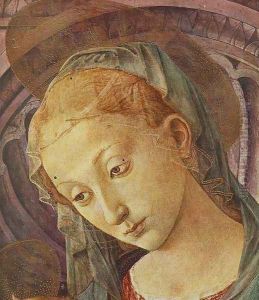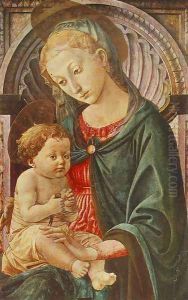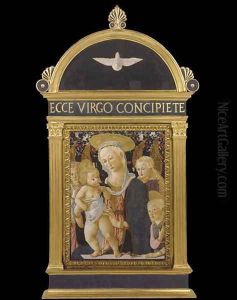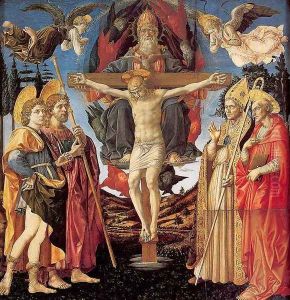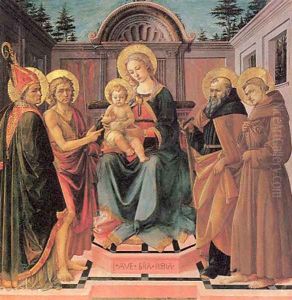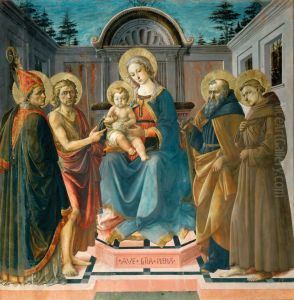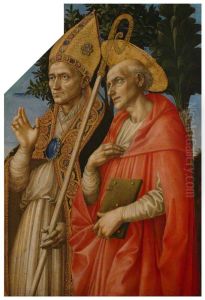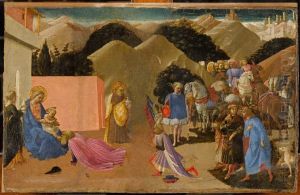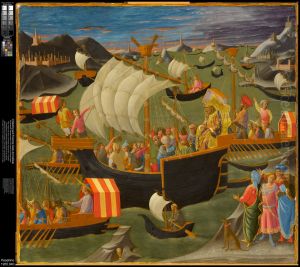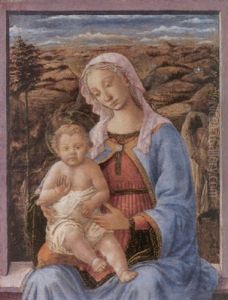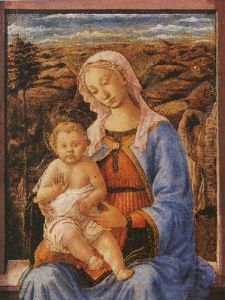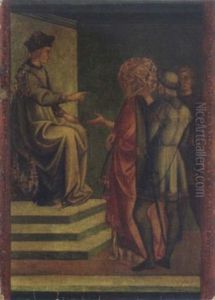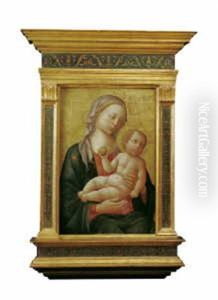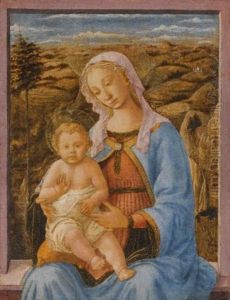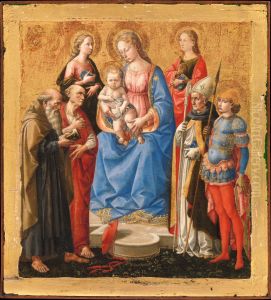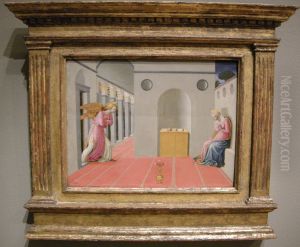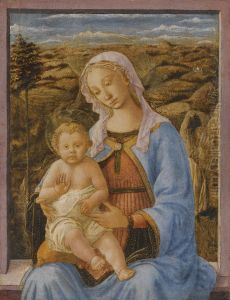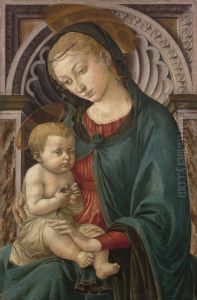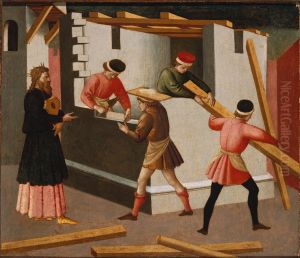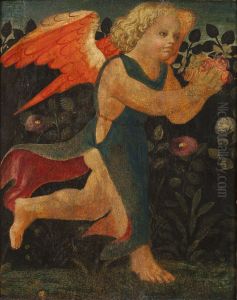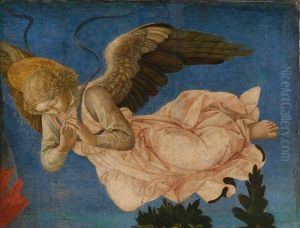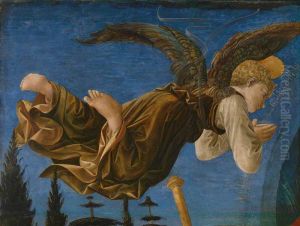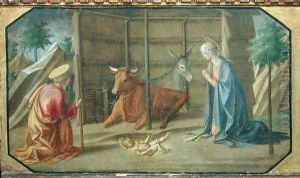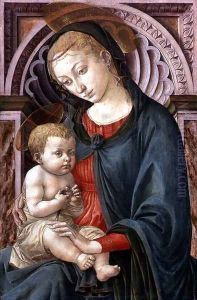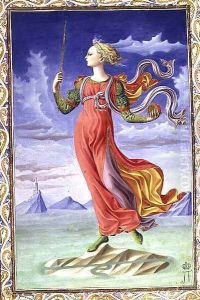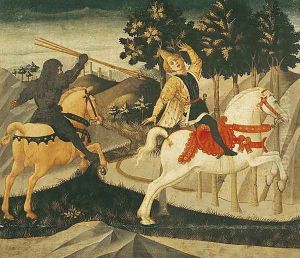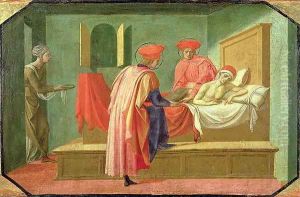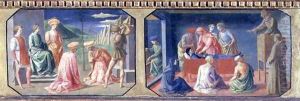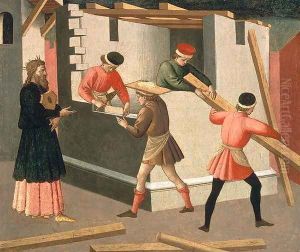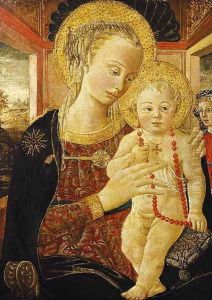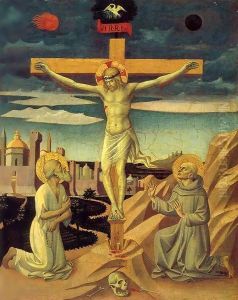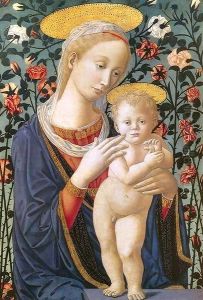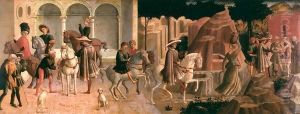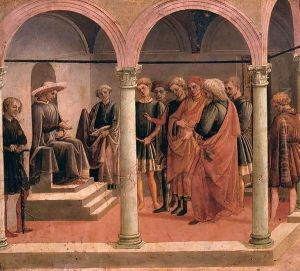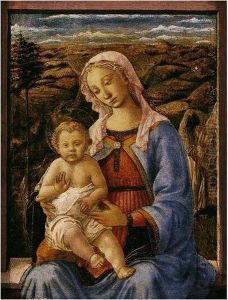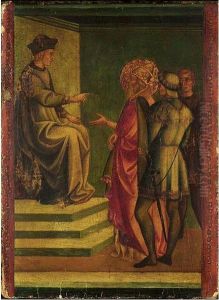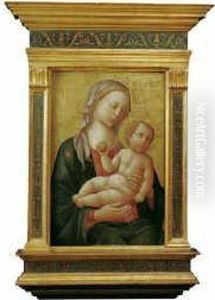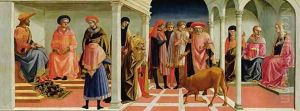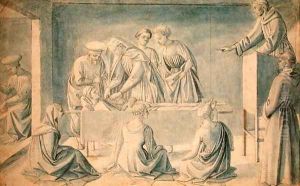Pesellino Paintings
Francesco di Stefano, known as Pesellino, was an Italian painter of the Renaissance period, born in 1422 in Florence, Italy. Although his career was brief due to his early death at the age of 35 in 1457, Pesellino left a significant mark on the art world with his innovative techniques and compositions. He was the grandson of Giuliano Pesello and the son of Stefano di Francesco, both painters, which likely influenced his early exposure to the arts.
Pesellino was trained in the workshop of Fra Filippo Lippi, one of the leading Florentine painters of the time. This experience exposed him to the advancements in perspective, narrative, and human anatomy that characterized the early Renaissance. His own style, however, would also show the influence of other contemporary artists such as Masaccio and Fra Angelico.
The artist's works are known for their delicate execution, vivid colors, and intricate detail. He was particularly adept at small-scale predella panels and was renowned for his storytelling ability through art, often depicting complex religious and mythological scenes. One of his most notable works is the 'Trinity Altarpiece' (also known as the Pistoia Santa Trinita Altarpiece), completed around 1455.
Unfortunately, Pesellino's career was cut short when he died suddenly in 1457. Despite his early death, his works had a considerable influence on later artists, including those of the Florentine school. His legacy is preserved in the masterful paintings that continue to be appreciated for their contribution to the development of Renaissance art.
